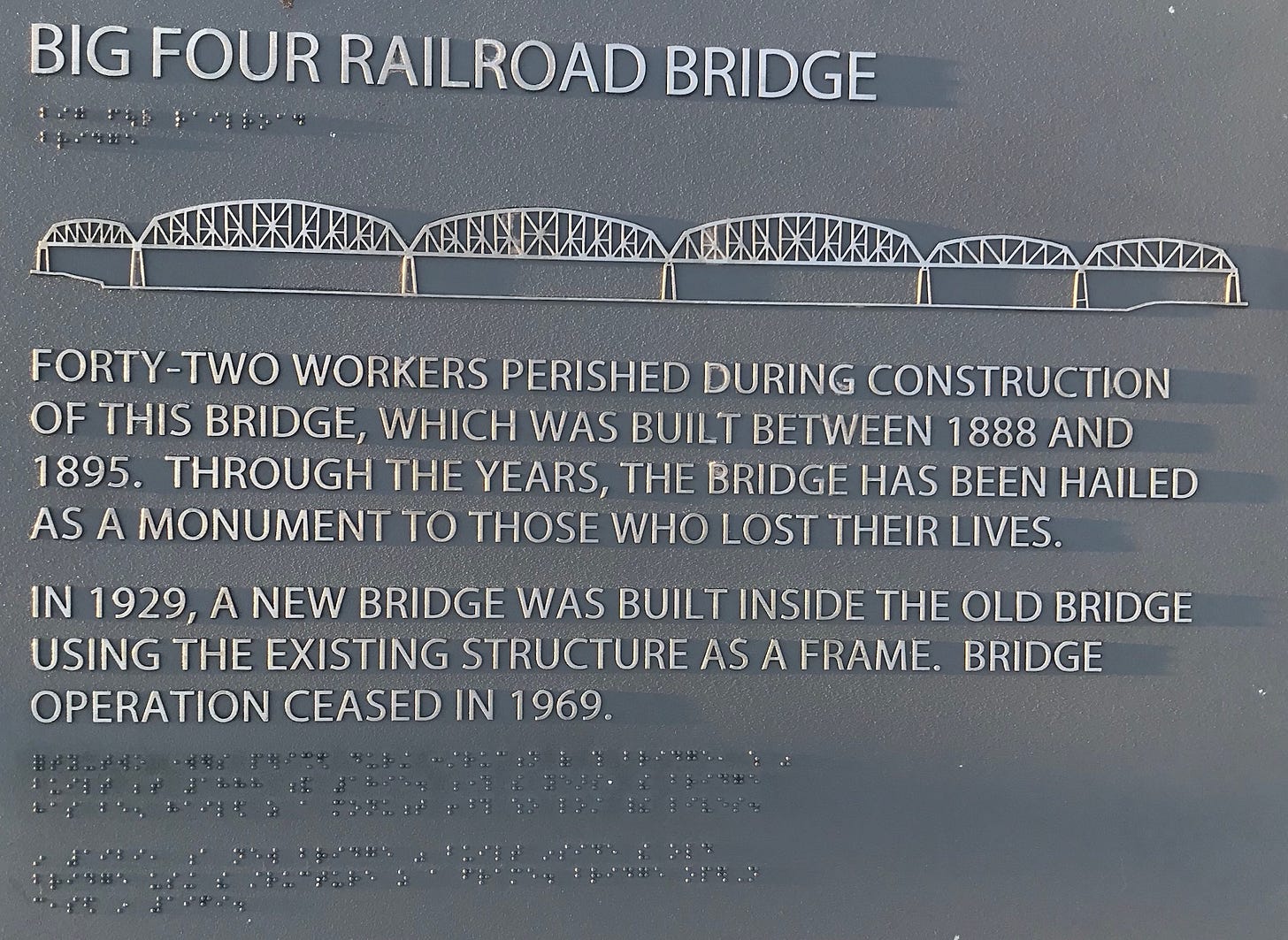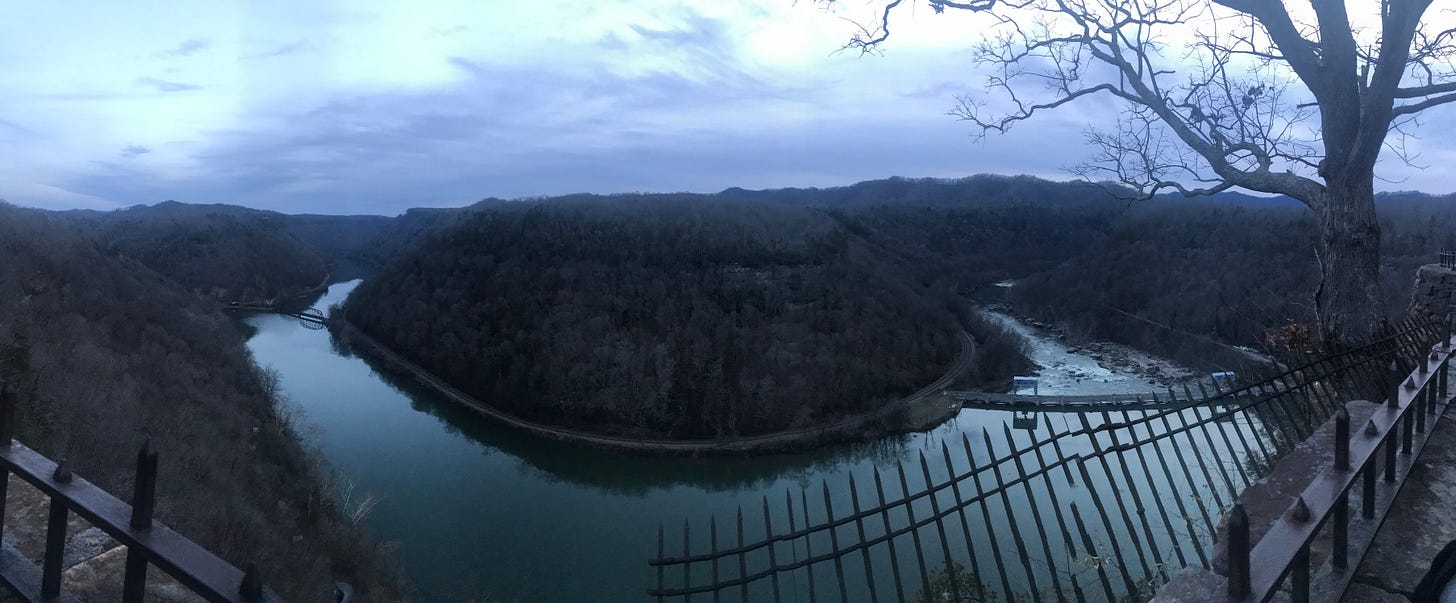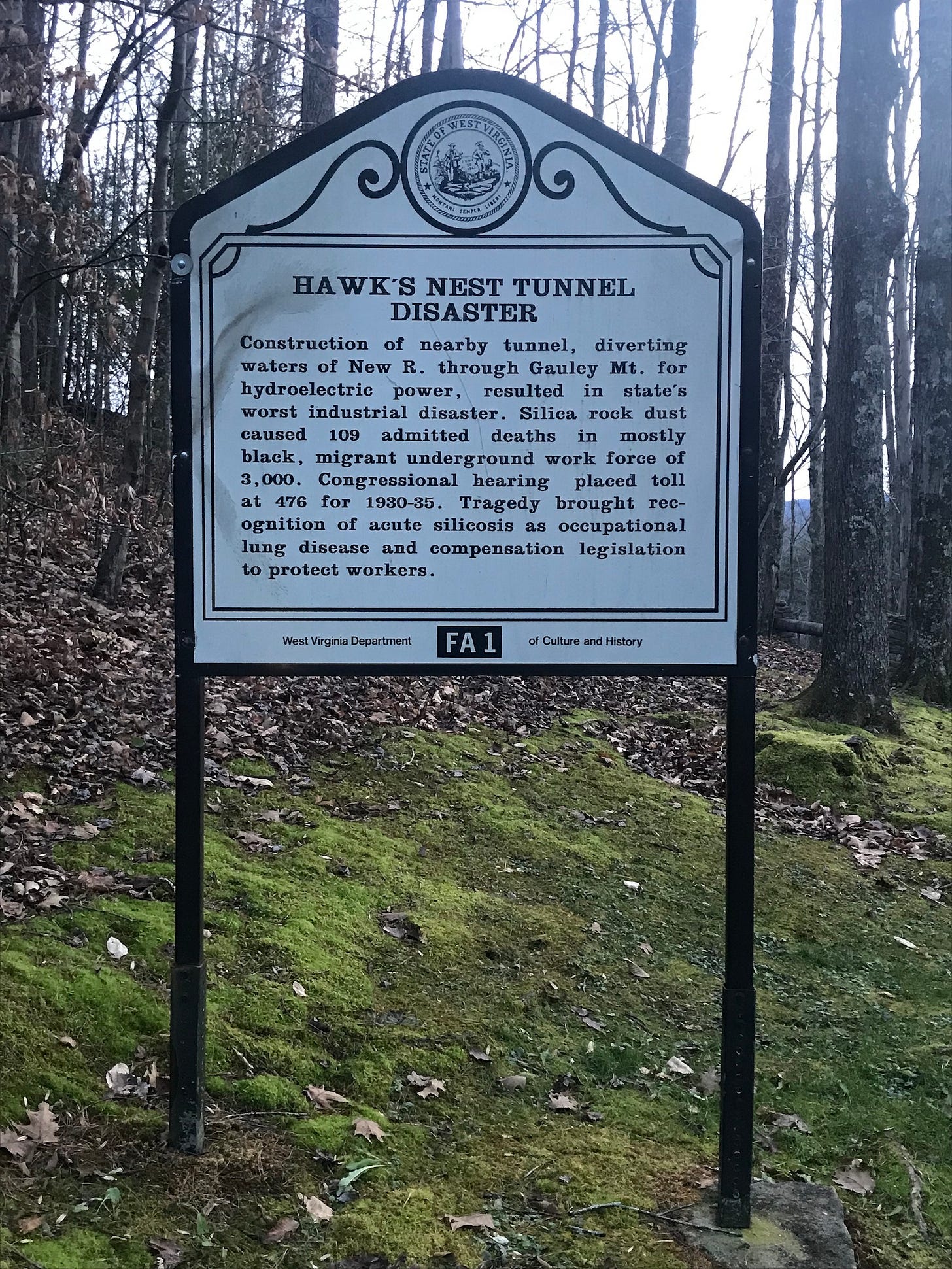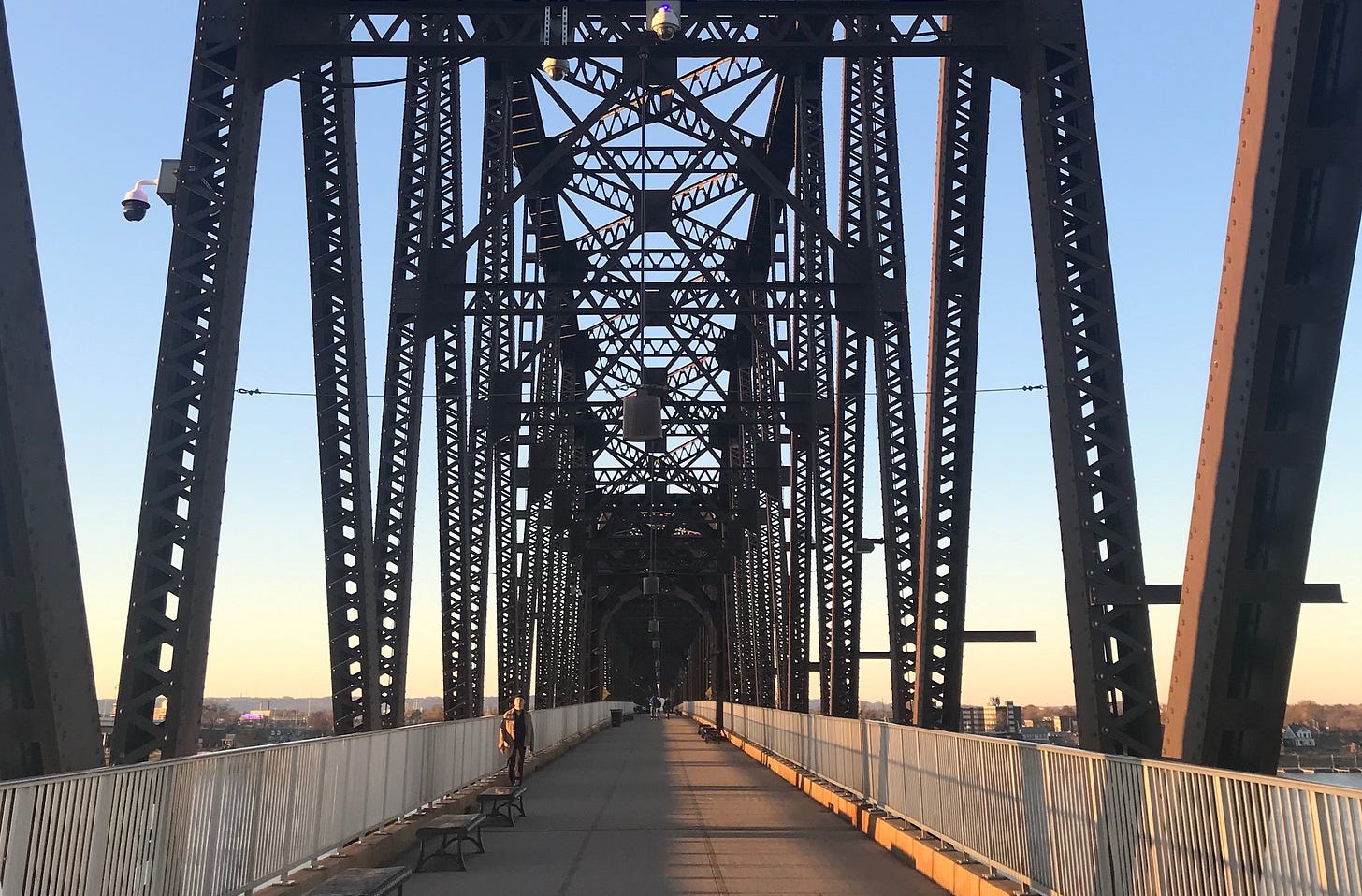Qatar, the World Cup & the echoes of history
How stadiums in Qatar connect to a bridge in Kentucky and a dam in West Virginia
Last year a producer from the HISTORY Channel emailed me to ask if I’d be guest on a series called “Engineering Projects that Built America.” For those unaware, the ‘That Built’ franchise is one of HISTORY’s most successful; installments include “The Machines That Built America,”; “The Toys That Built America”; “The Titans Who Built America;” and even “The Food That Built America.”
In my call with the producer, she explained which engineering projects were in consideration for the series: the Panama Canal, the Hoover Dam, the New York City subway, the Statue of Liberty, etc. She then asked if I had other ideas, to which I responded generally without giving specifics. (I’ve learned from experience not to give the HISTORY Channel your ideas for free; they will turn them into shows without giving you credit. That’s a story for another time.)
The project changed producers and ultimately aired in fall 2021 as “The Engineering That Built the World.” I never received a formal invitation to be on the show, and I largely put the conversation out of my mind. I was reminded of it this past week, however, when two things occurred: an interview on the Piers Morgan show about the World Cup in Qatar and my wife and mine’s Thanksgiving road trip through the Rust Belt and Appalachia. All have been converging in my head for the past few days, so permit me to ponder aloud with you on how the three connect.
***
During the Thanksgiving holiday, my wife and I took a road trip through Ohio, Kentucky, Tennessee and West Virginia, while also passing through southwestern Virginia and western Pennsylvania. We stopped at several historic sites and saw many fascinating places, more of which will be described in future newsletters. For now, I want to focus on two sites: The Big Four Bridge and Hawks Nest State Park.
The Big Four Railroad Bridge is in Louisville, Kentucky. It spans the Ohio River, connecting Louisville with Jeffersonville, Indiana. The name Big Four derives from the four cities of the Cleveland, Cincinnati, Chicago and St. Louis Railroad Company whose trains ran across the bridge. When constructed between 1889 and 1895 it was an impressive engineering feat, its steel truss spans allowing the bridge to cross a one-mile-wide portion of the river that previously could only be traversed by ferry. Counting its approaches, the bridge was 9,000 feet long and, upon completion, allowed for efficient commerce between Kentucky, Indiana, and further points west and south. One can make a convincing case that the Big Four Bridge was an engineering project that helped to build America.
But the Big Four bridge was also a site of tragedy. In the first year of its construction, the foundations on the south side of the bridge, called caissons, were flooded, drowning several workers alive in a horrifying fashion. Four years later, two of the spans collapsed, killing more workers. A Louisville newspaper in 1893 described the scene:
The bridge which is being built across the Ohio River between this city and Jeffersonville has added another long list of victims to the fatalities which have marked every step of its progress. Forty-five men were carried down by the giving way of the second channel span at 10:20 o’clock a.m. The night at 6 o’clock another span fell, being blown down by a sharp wind storm. The night watchman and several workmen were on the span.
Some of the men survived. But as was noted by the newspaper and other sources, the deaths and injuries were not simply unfortunate accidents. They resulted from negligence by the company, overlooking safety for the purposes of completing the project as quickly as possible and maximizing profits. The same newspaper wrote:
There seems little doubt that the bridge builders were guilty of taking terrible risk. Workmen say the false work under the span had been settled for three days and that the company was straining every nerve to complete the span before it should fail… A great deal has been said about the false work being poorly constructed.”
Eventually, the Big Four Bridge became unsuitable for rail traffic as trains became heavier. The last rail car passed over it in 1968, and the bridge was decommissioned the following year. After languishing for decades, it became part of a downtown revitalization project. Today, it is a pedestrian-only walkway at the heart of the beautiful Louisville waterfront, illuminated at night by glowing LEDs. Walking across the bridge at sunset offers a glorious view of the Ohio River. A plaque on the bridge mentions that 42 workers perished during its construction. Their names are not listed.

*****
Hawks Nest State Park near Anstead, West Virginia, also offers stunning views of the river below. It is also the site of horrific workplace tragedy.
Hawks Nest is a mountain peak high atop the New River. The New River is a fast-moving river that, if dammed, can generate a rush of water through a tunnel that would provide hydro-electric power to sites miles away. In the late 1920s, that is precisely what engineers for Union Carbide Corporation figured out. Union Carbide had a facility in Alloy, West Virginia, that required power, but the facility sat next to a slow-moving river that could not generate enough electricity. So, engineers determined they could dam the New River and build a three-mile-long tunnel inside the mountain to divert water to a hydroelectric plant, which would, in turn, power Union Carbide’s operations.
Union Carbide began construction on the dam and tunnel in 1930. Since it was the height of the Depression, they were easily able to recruit labor locally as well as from impoverished Southern states. Some of the workers were white, but most were black. They lived in crowded shacks with coal heaters; white workers were given electricity, black workers were not. An armed foreman ensured workers reported each morning. Over several years, workers built a tunnel that measured 16,282 feet with a vertical drop of 162 feet. It represented one of the most impressive engineering feats of its era. The plant began generating electricity in January 1937 and hit a peak of 103-megawatt hours on April 21, 1948. One could make a convincing argument that the dam and tunnel were an engineering project that helped to build America.

But the conditions for workers inside the tunnel were horrific and deadly. The procedure for building the tunnel was to detonate explosives inside the rock. That exposed workers to a life-threatening substance called silica dust. The inhalation of small dust particles from the rock led to the fatal lung disease, silicosis, wherein dust particles become trapped in the lungs, eventually leading to scarring and fibrosis. The end-result was an impaired ability to breathe and, eventually, death. It is unknown how many workers died at Hawks Nest, with estimates ranging from several dozen to several thousands. Contemporary documents reveal the company hired an undertaker to bury bodies in an unmarked grave on a nearby farm, some of the dead still covered in dust. Some bodies were eventually found in the 2000s in the lot of an abandoned housing project. They had been quietly relocated in 1972 by a North Carolina company that was no longer in business.
Similar to the tragedy at Big Four, the tragedy at Hawks Nest arose due to corporate malfeasance and disregard for worker safety. Silicosis was well-known by the 1930s; the condition had been documented in England in the 19th century and in South African mines in the early 20th century. Mitigation measures existed, including better ventilation and wet-drilling, which suppressed the dust. But those measures were not taken, as they would have slowed the pace of work and increased costs. According to worker testimonies, the only time wet drilling was used was when state inspectors were close by.

Reports of the tragedy at Hawks Nest eventually reached a New York Congressman named Vito Marcantonio. Marcantonio held hearings in 1936, which resulted in a series of small articles in the newspapers that were largely sympathetic to the company and minimized the tragedy. Subsequent lawsuits resulted in meager compensation for survivors: between $400 for black workers and $1,000 for white workers. Today, the dam and tunnel still operate. Amid the gorgeous vistas at Hawks Nest State Park, a small marker acknowledges the state’s “worst industrial disaster” and places the death toll at 476 individuals. None of the victims’ names are listed.

*****
On our trip is also when I saw an article about the World Cup in Qatar. During an interview with Piers Morgan, the secretary-general of Qatar’s Supreme Committee for Delivery and Legacy, Hassan al-Thawadi, stated that deaths of workers involved in World Cup construction numbered between 400 and 500 people. “I don’t have the exact number,” al-Thawadi later said.
There are those who say that history does not rhyme, but it does echo. Upon reading that news article, I felt the echo of al-Thawadi’s words through the canyons of Hawks Nest and the beams of the Big Four Bridge. The inability of those in power to account with accuracy how many lives have been lost in their pursuits of projects that are meant to dazzle, advance commerce and enrich corporations or kingdoms felt tremendously callous—as callous in Qatar as it had been in Kentucky or West Virginia.
In Louisville, they were immigrant workers. At Hawks Nest, they were local and migrant laborers. In Qatar, they are foreign nationals from Bangladesh, Nepal, Sri Lanka and China who have often been trafficked or extorted into forced labor and made to work long hours in extreme heat with little or no breaks in order to complete stadiums as quickly as possible to showcase Qatar to the world. We do not know how many have died or have been injured. Maybe one day, long after the World Cup has passed, a small plaque will be placed next to the stadiums with three or four sentences about what these workers endured. It will almost certainly not include their names.

*****
If you watch the HISTORY Channel series, “The Engineering That Built the World,” you’ll notice that it adheres to a familiar trope of the great man theory of history. The episodes laud the “ambitious,” “risk-taking” “heroic” male millionaires who “overcame the odds” and “risked everything” to lay the transatlantic cable or secure the government contracts needed to build the transcontinental railroad.
This particular brand of history has been repudiated by most academic and public historians as patriarchal, chauvinist and even jingoistic. But it’s a brand of history still very much en vogue in Hollywood and media—and, indeed, “The Titans Who Built America” series is produced by Leonardo Di Caprio’s production company Appian Way. The reason is simple: it makes for a compelling story. An ambitious, eccentric debonair who risks everything to overcome the odds and conquer both man and nature is a tidy plot device that adheres neatly to Hollywood’s brand of storytelling.
But history is not a movie, and the past is not a neat and tidy story. Even if you disagree with historians’ disputation of great man theory, at best this brand of history is woefully incomplete. It erases the negligence, corporate malfeasance, disregard for human life, incredible dangers, and horrific tragedies that have accompanied so many engineering marvels. Those realities are an equally valid part of the narrative. They deserve more than a few sentences on a plaque.
“The Titans Who Built America” was actually originally titled “The Men Who Built America” (because women did nothing contribute to building America, right?). In reality, the people who built America—the people who built the Big Four Bridge, the Hawks Nest Tunnel, and the stadiums in Qatar—are names we’ll never know, voices we’ll never hear, and suffering we will never truly understand.
If the HISTORY Channel wants to ask me about that part of the story, I’ll be glad to tell them what I know.
Have a safe week.





Great essay, as usual.